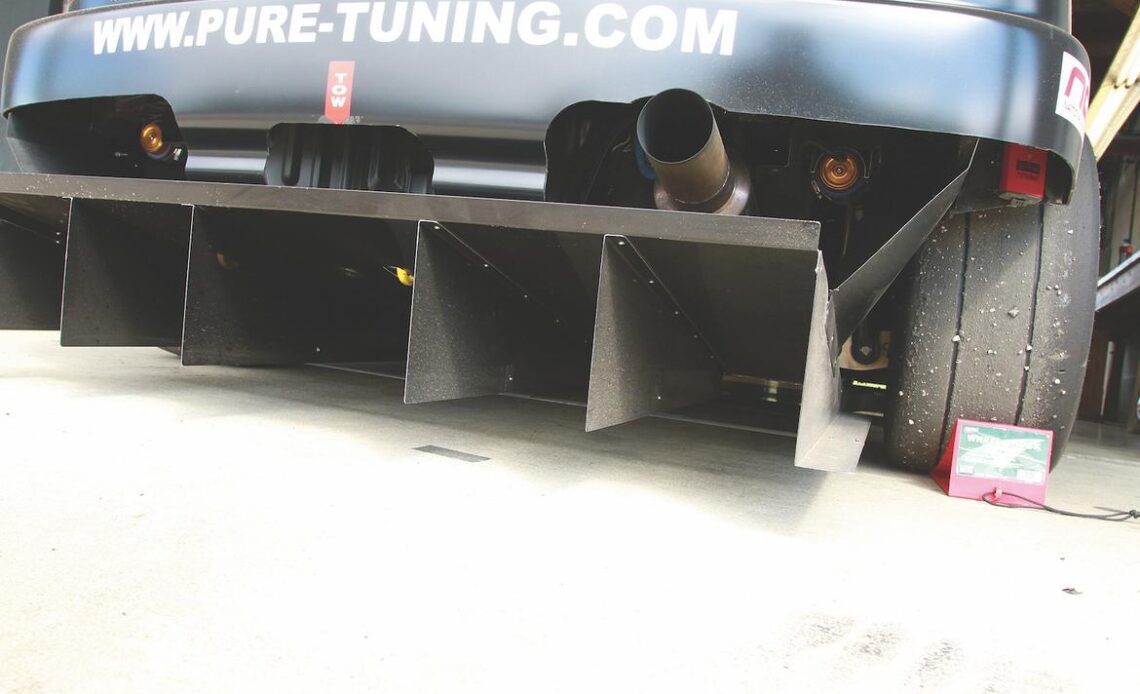For half a century, wings and spoilers have helped race cars stick to the track. Lately, though, another piece of equipment has joined the mix: underbody rear diffusers. Originally seen only on pro cars, these diffusers quickly made their way to the amateur ranks. Stroll through the grid at a club race, time trial or track day, and you’ll see …
What Do Diffusers Do?
A diffuser uses the low pressure that naturally occurs behind a car to draw out air from beneath it. The result: downforce that hugs the tires to the track.
The walls of the diffuser contain the suction and increase the airflow through the unit’s entrance, or throat—normally its forward-most and lowest point. This increased flow at the throat reduces pressure by way of a venturi effect.
The length and angle of the diffuser dictates how far forward the increased downforce can act on the car. The longer and shallower the diffuser, the farther the downforce will reach.
A steeper angle on the diffuser translates linearly into more downforce, provided the diffuser doesn’t stall. A diffuser stalls because the air can only expand up to a certain rate. Stalling limits the downforce that can be created.
In a diffuser that is too steep or too short, the air will not be able to follow the surface smoothly; it will break away from the surface to find the path of least resistance. This places a theoretical maximum angle of 9 degrees, but height from the ground has much greater influence than any other factor.
How Can You Maximize Your Diffuser?
Rules may limit the size and location of a diffuser—if they don’t ban them altogether—so maximizing its performance can require a great deal of development for just those last few percent. There are a few ways to accomplish this, but they each come with caveats.
Photography Credit: David S. Wallens
- Incorporating the Exhaust: Allowing the exhaust pipes to dump into the diffuser helps accelerate air flow, providing more downforce.
The diffuser loses a significant portion of downforce as the car transitions from open throttle to closed throttle. This can shift the balance to the front when the driver least wants that to happen. - Adding Strakes: Adding strakes or fences inside the diffuser can delay the stall of the airflow or…
Click Here to Read the Full Original Article at Grassroots Motorsports Online Articles…

